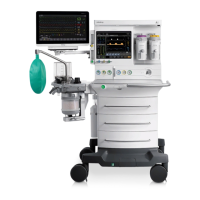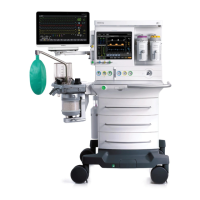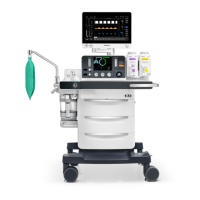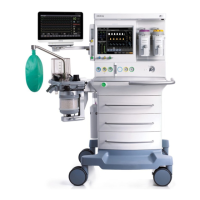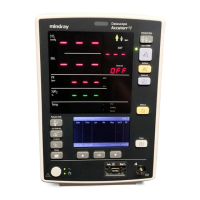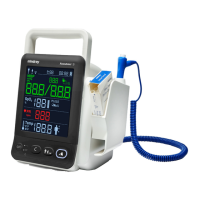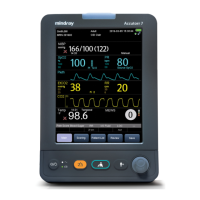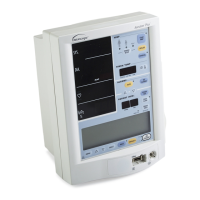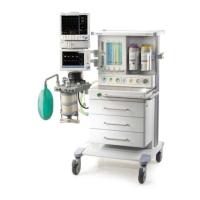6-1
6 System Calibration
6.1 Overview
This section elaborates how to test and calibrate the A8/A9 anesthesia machine. Calibration refers
to mechanical and electrical adjustments using test devices.
Functional tests must be performed after calibration to verify the calibration
result.
Ensure that all test materials including the drive gas, breathing circuits, test fixtures, tools, and
documents are the latest, available, and calibrated prior to system calibration.
6.2 Precautions
6.2.1 Warnings
Use fuses of the specified type and rating to prevent fire.
The machine (protection class I) can be connected only to a correctly grounded
power supply (including the socket with grounding contact) to prevent electric
shocks.
Remove all auxiliary devices from the shel
f before moving the anesthesia
machine on the rough road or any slope. The anesthesia machine with a weight
on its top is likely to tip over, causing personal injuries.
To avoid the possible explosion hazard, do not operate the machine near
flammable anest
hetic agents or other flammable substances. Do not use
flammable anesthetic agents such as ether or cyclopropane.
When high-frequency electric surgery equipment is used, anti-
electrically conductive breathing tubes may cause burns. Therefore, they are
recommended at no time.
The electric shock hazard may exist. The machine can be opened only by
authorized service personnel.
According to IATA and DOT regulations, compressed gases are dangerous.
Therefore, the packages or transport packages of dange
rous goods must be
properly identified, packed, marked, classified, labeled, and documented in
accordance with the DOT and IATA regulations. For details, see the
International Air Transport Association – Dangerous Goods Regulations and/or
Part 171-180 "Transportation" in Title 49 of the Code of Federal Regulations.

